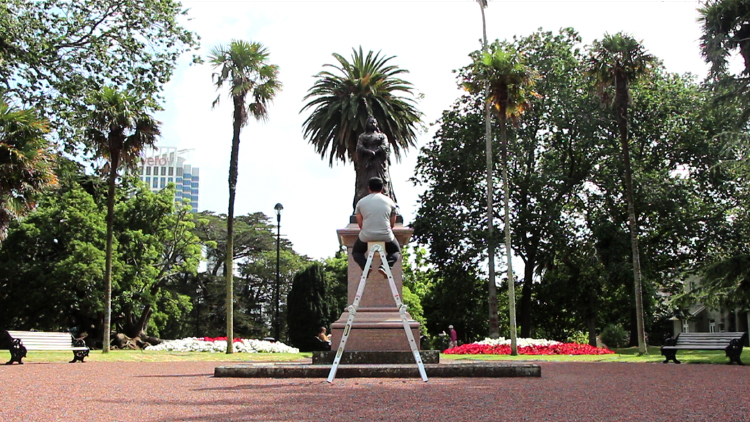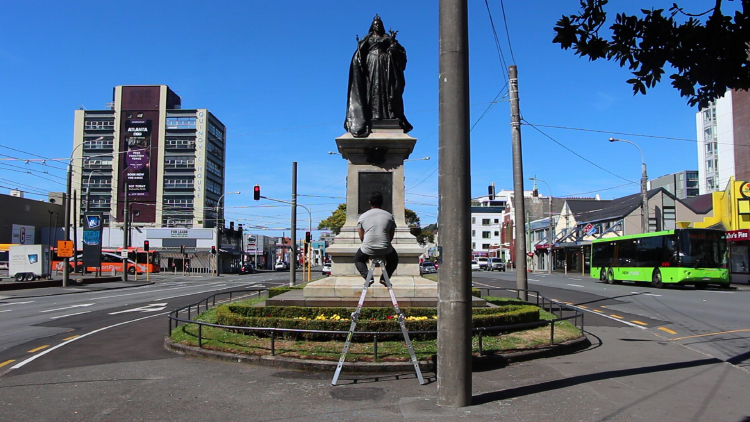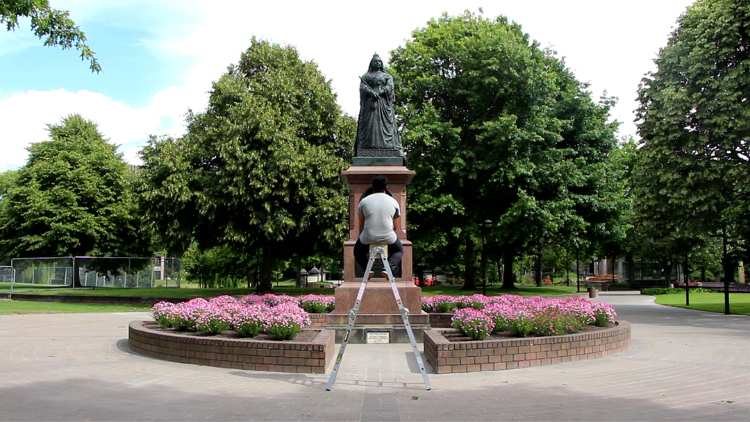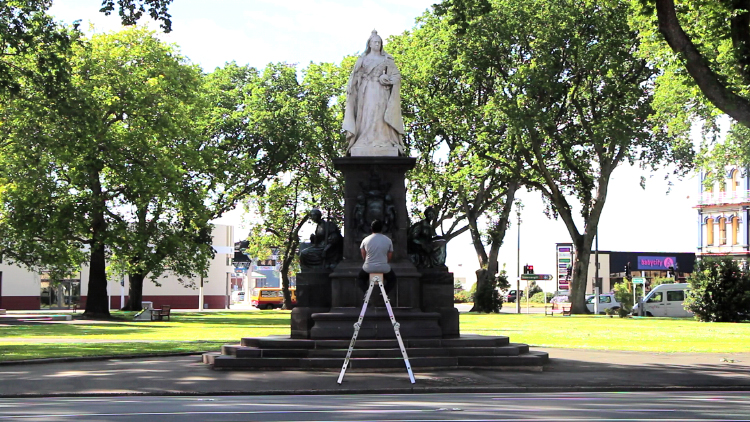Close Encounter/h1>
A Meeting with the Queen
IOANA GORDON-SMITH

JEREMY LEATINU’U Film still from Queen Victoria 2013
Auckland-based artist Jeremy Leatinu’u is not one to shy away from tension. In his site-responsive interventions, which are primarily filmed for presentation as video works, Leatinu’u strategically positions himself directly in public spaces, using his body to resist or depart peacefully from the social conventions expected in those sites. Working without prior permission or publicity, his presence consistently teases out frictions in order to expose them.
Perhaps Leatinu’u’s most ambitious engagement with imbedded socio-political structures is a series of interventions recorded in 2013. Queen Victoria centres on four statues of the monarch, one found in each of New Zealand’s major cities: Auckland, Wellington, Christchurch and Dunedin. In each location, Leatinu’u opens a portable ladder, climbs to the top, and from his makeshift perch contemplates the statue opposite him silently for a while. It is a simple, quiet gesture that nonetheless represents a mild transgression of ‘proper’ place; an act that forces a meeting between statue and artist on more equal terms.
Leatinu’u’s elevation makes evident a number of binaries between him and the monument: male/female, flesh/bronze, working class/royalty, Polynesian/European, colonised/coloniser. There is also a perceivable artistic contrast between performance and sculpture; the temporary and the monumental. The subjects are almost defined through contradistinction. The differences between the two figures occupying the frame reinforce the oddity of their shared occupation within the same context and space. Yet it is this co-habitation of distinct social positions and the accompanying power disparity that Leatinu’u wills us to see. In choosing a ladder as his seat ― an object mostly used in this context either to restore or deface monuments ― Leatinu’u renders these memorials unfixed, susceptible to a reproduction of meaning. The artist however, is motivated less by an attempt to enact a change upon the statues and more by a desire to understand better the relationship between him as individual and the memorials as symbols of a complex colonial history. With his back facing the viewer, the artist also becomes a surrogate for the viewer. We too encounter the face of Queen Victoria, a figurehead irrevocably tied up with the nation’s self-definition. What is our relationship with these imperial markers?
Queen Victoria has not been shown to date in its intended video format; it is primarily through stills that the work has been distributed. This portfolio also includes a separate photograph that captures Leatinu’u partially obscuring the phrase DEMOLITION on a truck parked behind him. The image is an eerie reminder of the drastic devastation in Christchurch post-earthquake. It also underscores the contemporary as a moment of constant reconstruction. Queen Victoria points to that space between production and revision, where the desire to memorialise meets the legacy a memorial leaves in its wake. As the World War I centenary grips the country, a renewed consideration of how memorials function now and what we gain from their existence is not only timely; it is urgent.

JEREMY LEATINU’U Film still from Queen Victoria 2013

JEREMY LEATINU’U Film still from Queen Victoria 2013

JEREMY LEATINU’U Film still from Queen Victoria 2013

Documentation from Queen Victoria 2013 (Photograph: Rangituhia Hollis)
